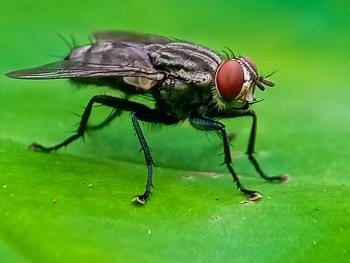
- December 2016
- Volume 1
- Issue 3
WWVC 2016: Ethical, Legal, and Enrichment Considerations When Managing Wild, Captive Birds
At the 2016 Wild West Veterinary Conference in Reno, October 12-16, American Veterinarian sat down with M. Scott Echols DVM, ABVP, owner of Echols Veterinary Services, Avian Studios, director of the Grey Parrot Anatomy Project, and past president of the Association of Avian Veterinarians, to discuss the ethical and legal considerations of owning wild animals, such as birds, the illegal trading of African grey parrots, and key enrichment strategies veterinarians should encourage for birds.
At the 2016 Wild West Veterinary Conference (WWVC) in Reno, October 12-16, American Veterinarian sat down with M. Scott Echols DVM, ABVP, owner of Echols Veterinary Services, Avian Studios, director of the Grey Parrot Anatomy Project, and past president of the Association of Avian Veterinarians, to discuss the ethical and legal considerations of owning wild animals, such as birds, the illegal trading of African grey parrots, and key enrichment strategies veterinarians should encourage for birds.
American Veterinarian: What are the ethical considerations to owning a wild animal?
Echols: It’s not an easy question to answer. If I were going to answer the simple side of it is to say that, if you are going to keep a wild animal, really any animal, I think we should provide for its welfare, and that includes a proper diet, proper housing, [and] a proper behavioral set-up so that it’s emotional state can be taken care of. The reason that it is difficult to determine what those values are for a wild animal is because oftentimes, we do not know. We are asking a wild animal to live in our world. That is difficult for us to do and it is also difficult for some wild animals to adapt to our world. What we are trying to figure out is [if we can] allow for that animal to perform species-specific behaviors. That is one way we determine [if we are] providing for this animal’s welfare. Because if that animal is acting as we would expect in a wild environment—doing normal behaviors as opposed to self-destructive behaviors or clearly abnormal behaviors, then we are getting close to that welfare aspect that we are looking for.
AV: In light of the recent news about the wild bird trade decimating native populations of African grey parrots, what can veterinary professionals and their clients that care about these animal do?
E: There’s been a major landmark decision with Cites [www.cities.org] and they just recently provided the highest level of importance to African grey parrots, which essentially limits or eliminates international trade. It makes it illegal, which is going to be very helpful. It doesn’t mean that international trade will stop or that the central African populations of grey parrots will stop leaving the continent; however, it is a very big step and it at least provides some protection for grey parrots in the wild.
As far as what people can do in an effort to help with the problem of international trade and understanding wild animal status, I think we really have to look at conservation groups, not just for grey parrots, but for all different species. The information gained by studying one type of parrot we [will] use on all sorts of different animals and of course, parrots as well.
The World Parrot Trust is one group that is heavily involved in both the grey parrots in the wild and their trade issues, [and] also other parrots. There are quite a few other organizations that actively study parrots in the wild. What we can do is we can support those groups. That means volunteering, working for those organizations, providing financial donations to those organizations, and also providing information. If we see birds that we feel are smuggled or might be endangered, we can report those to the authorities and try to provide the best care for those animals.
Of course veterinarians work all over the world—we are not just in private practice, we are sometimes in the field and working in different situations. Veterinarians may be working in foreign countries where they see birds still being brought in illegally and the population of people working with those birds can be our eyes and ears for the animals of the wild and can also help those researching the animals.”
AV: What are three key enrichment factors that veterinarians should encourage for birds?
E: There are several types of enrichment that we use with captive animals, not just birds; these enrichment factors will apply to many animals. The first, and probably most effective form of enrichment, is social enrichment. What I mean by that is interacting with the animal, whether that means the owner interacting with the animal or other animals in that household being able to interact with the animal. That could be cage mates, it could be other species who are outside the cage, it could be time outside the cage where they could interact together on, say, a perch or a play area or something like that.
Social enrichment also comes with the most variables, including bites and wounds and other behaviors that may be unwanted. However, social enrichment is what we consider the most effective form of enrichment.
The second one would be foraging enrichment, [which] is something that I’ve worked on for a number of years and have encouraged, and we’re now seeing it [used] in all types of animals, whether that’s cats and dogs, rodents, birds, etc. Foraging enrichment is the idea that we provide a means that [makes] animals have to work for their food, as opposed to [going] to the food bowl. So, they’re no longer going to that food trough [because] they actually [have] to work for their food. What we understand of many animal studies, especially [regarding] parrots, is that a good part of the waking time animals spend is looking for food. So, they’re actually out there hunting for food, whether that’s a nut or another animal, they’re hunting and looking for food items and that’s something that’s a very productive use of their time. If you look at what they do in captivity, they mostly spend time sitting on a perch, they waddle over to the food bowl, and then come back and sit there and do nothing. We really want [them] to use that time doing something productive and foraging is a great form of enrichment.
The third one, I would probably say would be environmental enrichment; these are things that are going to be in the environment. That’s the structure of the cage design or the play area. This is the physical space that the animal lives in. Obviously a constrained space, a small cage or some type of containment system, is going to limit that animal from doing its species-typical behavior. [Birds] can’t stretch and fly in a small box, [they’ve] got to be able to move around. We want them to have structures that they can climb on, move around on, chew on, that are safe items [or] toys they can play with and so forth.
Articles in this issue
almost 9 years ago
Three Ways Client Service Representatives Can Build Client Loyaltyalmost 9 years ago
The Use of Hyperbaric Oxygen Therapy in Small Animal Medicinealmost 9 years ago
Canine Socialization: More Than Meets the Eyealmost 9 years ago
Trained Therapy Animals Boost the Moods of Cancer Patientsalmost 9 years ago
Changes in 2016 Set the Stage for Exciting 2017almost 9 years ago
Dealing with Fleasalmost 9 years ago
Delinquent Clients: The Price of Compassionate Care?almost 9 years ago
Cranial Cruciate Ligament Injuryalmost 9 years ago
Extractions in the Real Worldalmost 9 years ago
Factors That Adversely Affect Reproductive Success in MaresNewsletter
From exam room tips to practice management insights, get trusted veterinary news delivered straight to your inbox—subscribe to dvm360.




